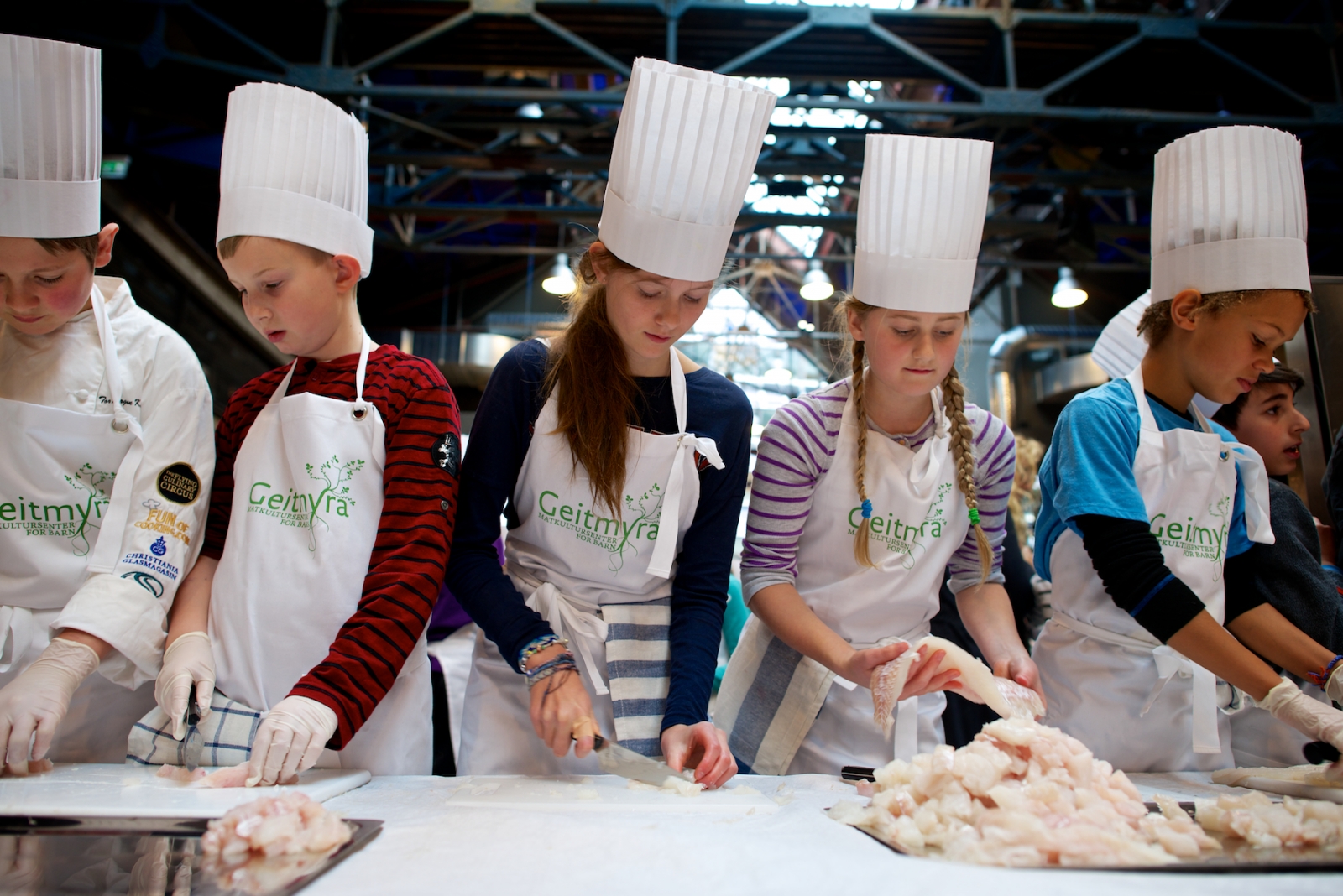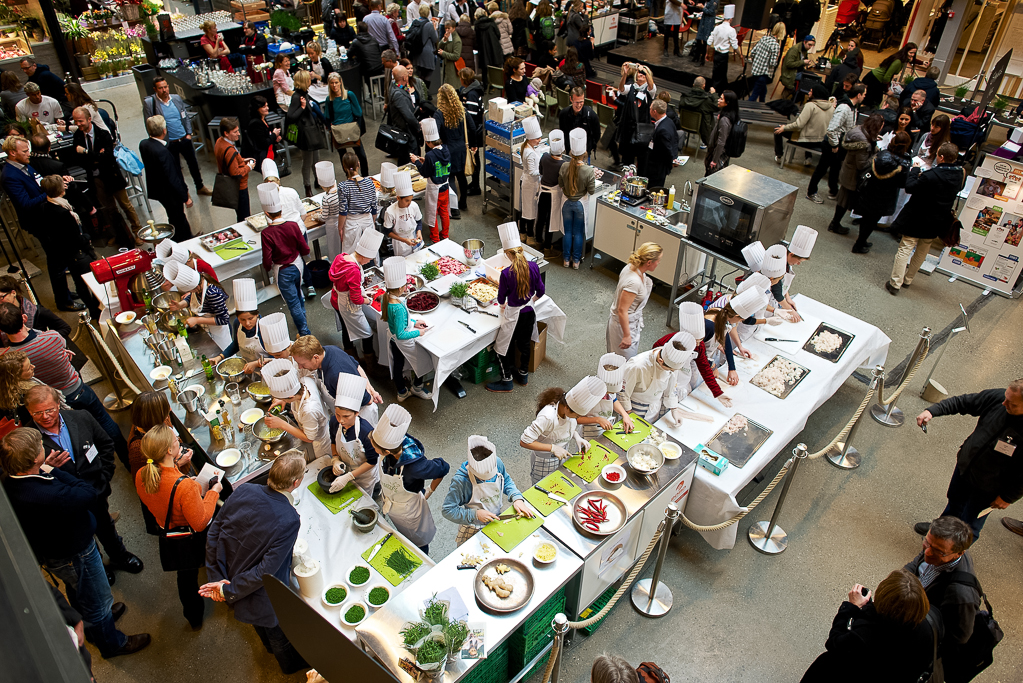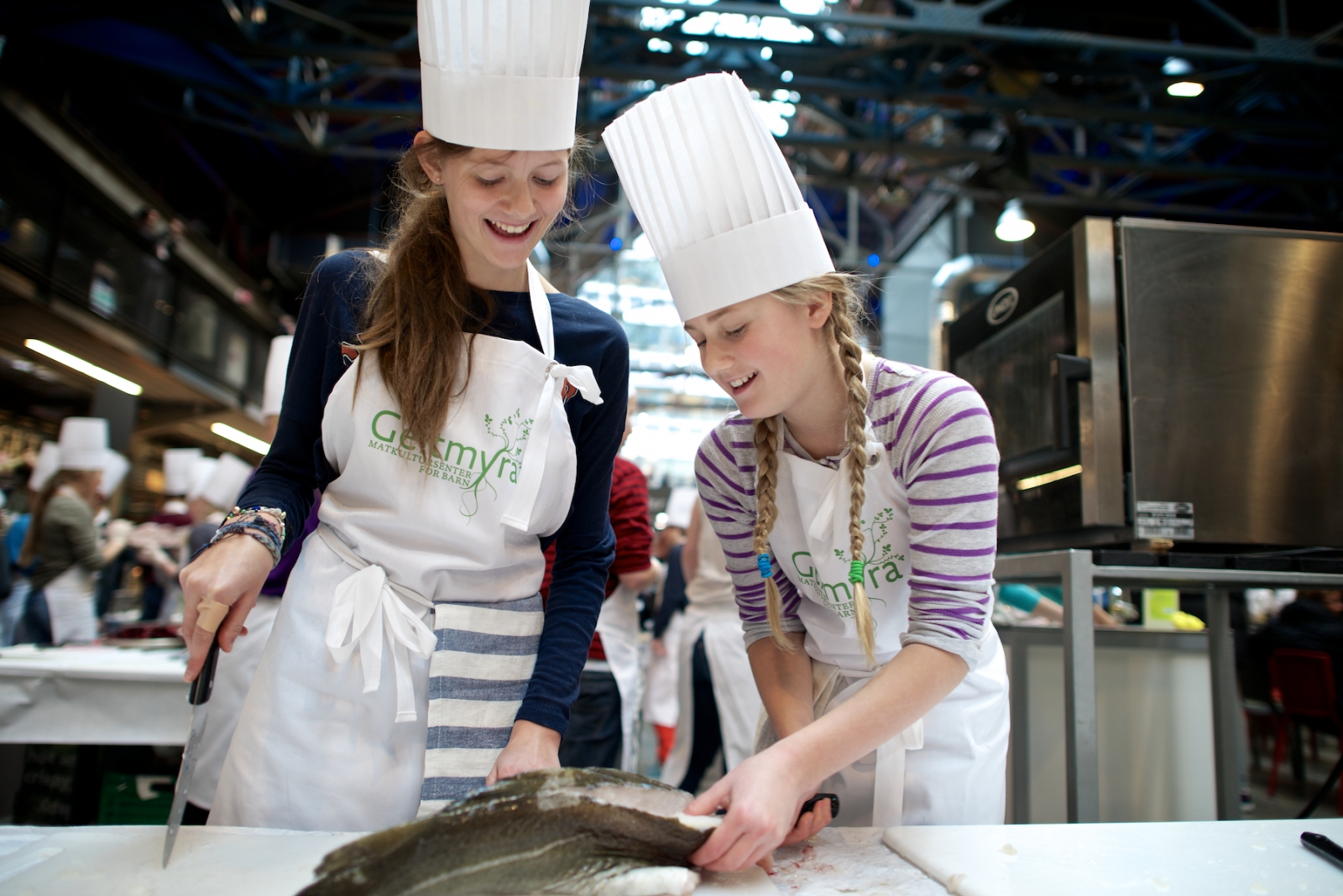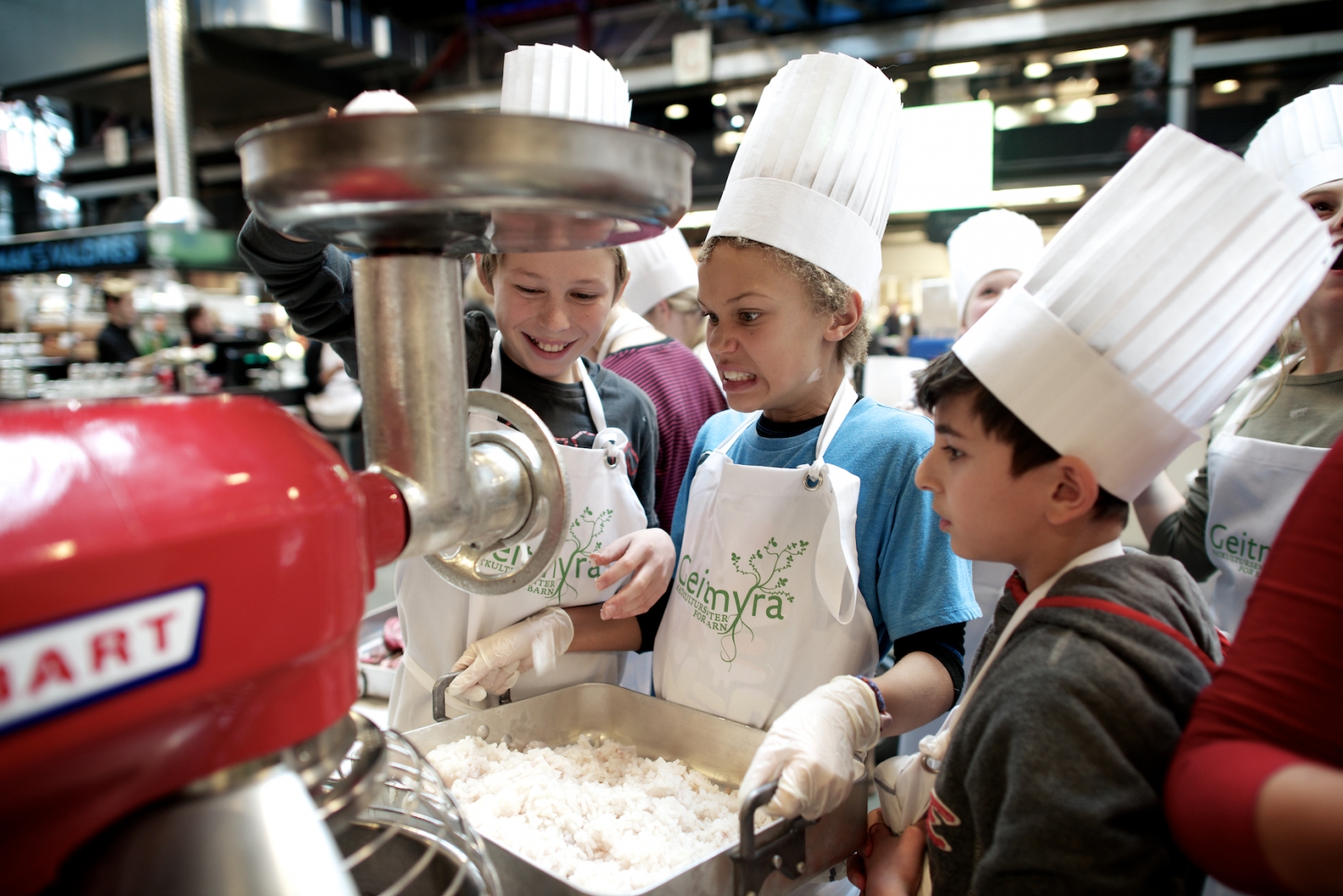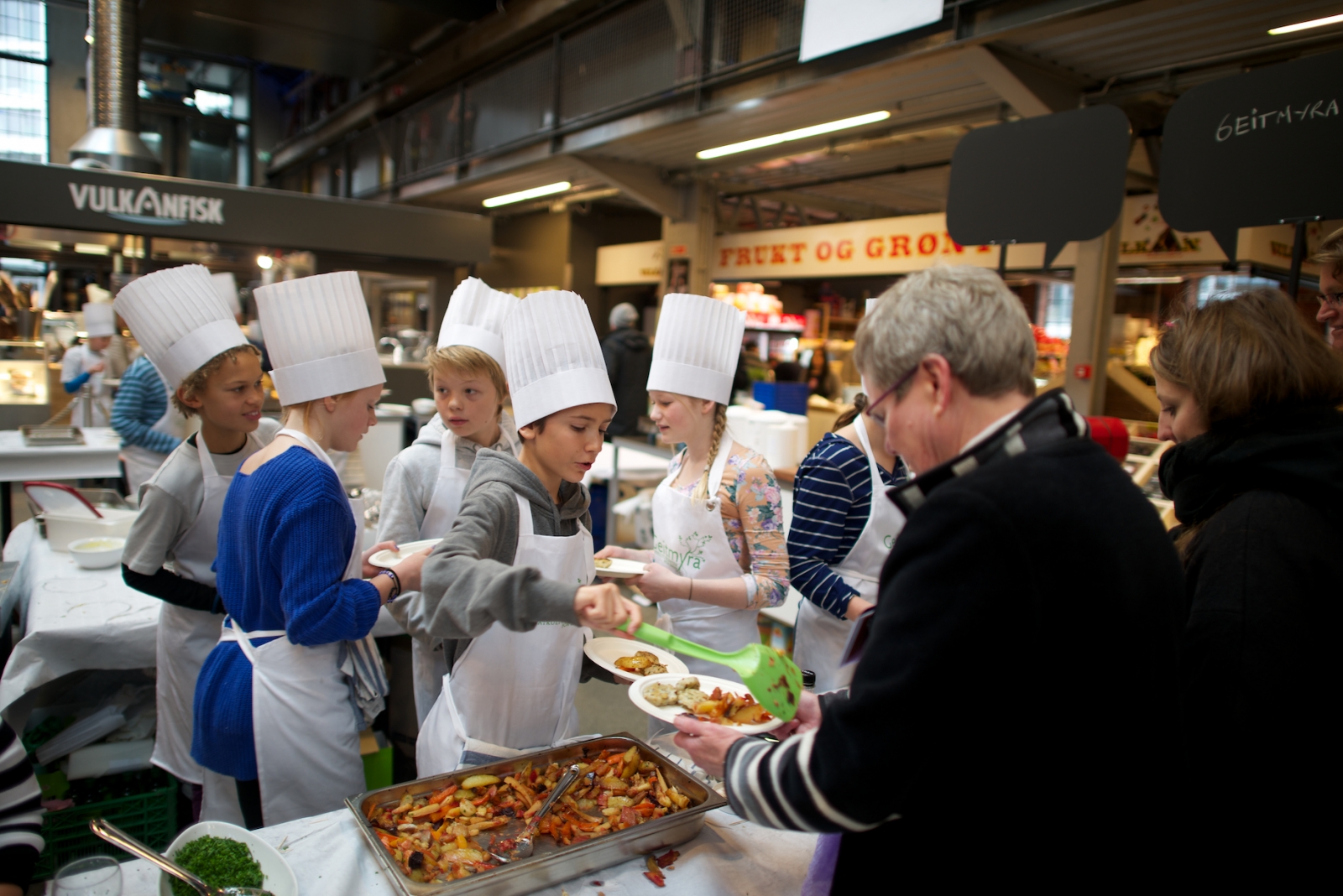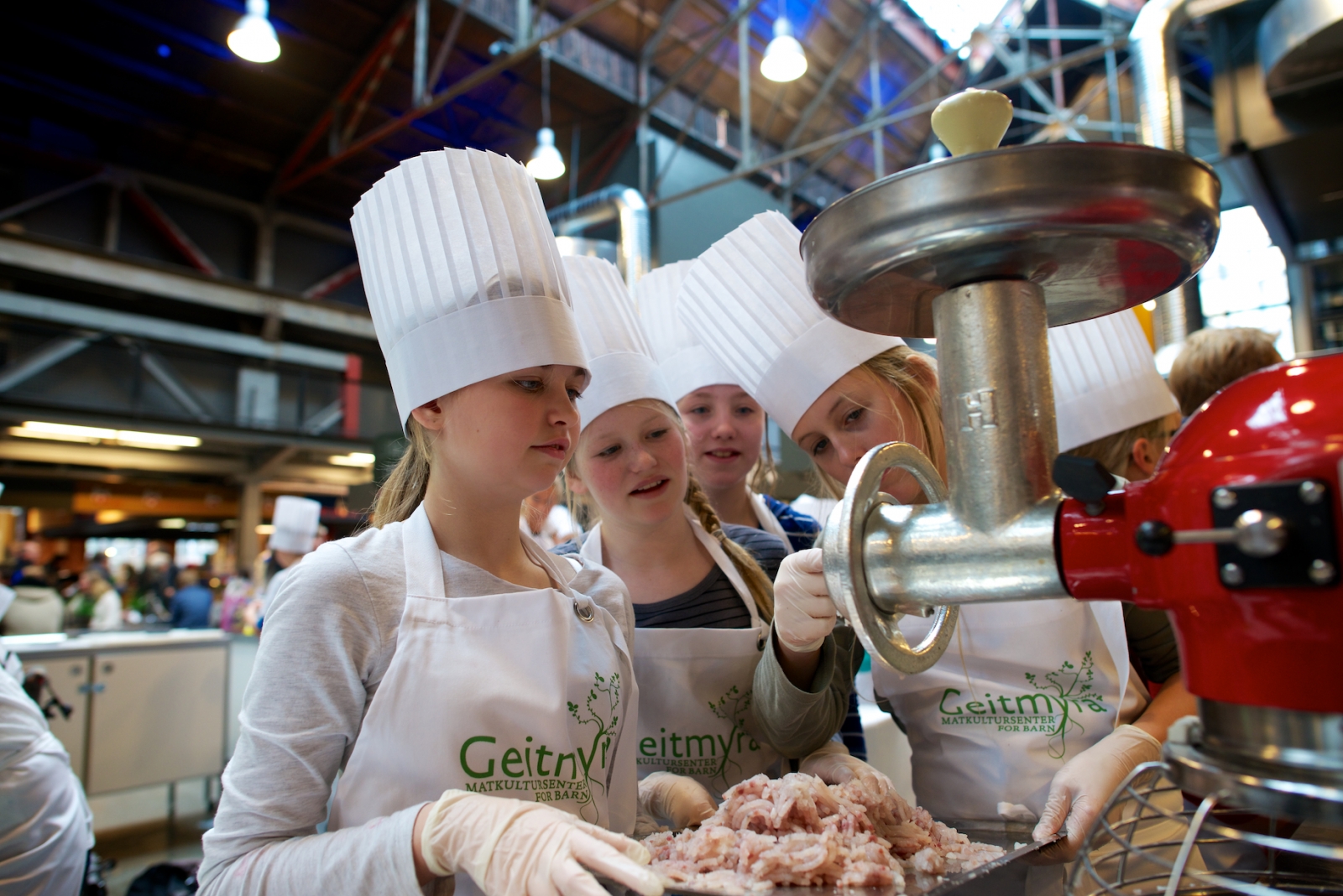Column
New Nordic Food
— All About the Kids
Over 140 delegates, comprised of policy makers, food professionals, and academics from across the Nordics gathered at Mathallen to network, communicate, and learn about some of the more pressing issues in Nordic food today. Food Studio was given a ringside seat, so we tagged along to see what we could learn.
The focus of this year’s conference would be on three interconnected topics: Children and Food, Public Foodscapes, and Food and Nutrition. This wasn’t a forum to discuss the happenings at the high end of food, but instead it was a chance to discuss the day-to-day reality of what is actually being eaten in the Nordics.
And from what I could see, the message is broadly encouraging, certainly relative to other countries, but there’s still plenty of room for improvement and some lessons to be learnt. We discovered that whereas in the last few years we have seen the erosion of the famously healthy Mediterranean diet, the Nordic diet has remained relatively stable and healthy. The big changes have been a general decline in the consumption of vegetables, which has been replaced in part by an increased consumption of fruit. However, more worryingly, we’ve also seen an increase in the consumption of cheap carbohydrates (i.e. junk food) across the Nordics in the last 10-15 years.
In the coffee breaks, with the buzz of conversations filling the room, we enjoyed coffee from Solberg & Hansen, Norway’s oldest coffee roaster, pastries from Morten Schakenda, one of Norway’s finest bakers based in Lom, and incredible chocolates with a Norwegian twist from Bengt Dahlberg in Geiranger. At a food conference, the last thing you want is for people to go hungry.
We saw a beautiful exhibition by Mat Langs Nasjonale Turistveger, who have travelled across Norway’s main tourist routes in search of the best Norwegian produce. In the evening we also enjoyed an impressive 13-course dinner prepared by award-winning Norwegian chef Sebastian Myhre, made entirely from Norwegian produce such as succulent scallops from Hitra and red king crab from Bugøynes. In addition, our thirsts were quenched with Norwegian beers, juices, ciders and spirits.
But what is it about the Nordic diet that makes it different? And how can we ensure we promote what’s good and healthy about it? For this we turned to the torchbearers of Nordic food and culture: the kids.
Clearly good, healthy eating habits are engrained in us from an early age and it’s an important message we need to teach our children. Good nutrition plays a key role in a child’s mental and physical development, and we learnt about various initiatives across the Nordics where this message is starting to become an integral part of a school’s curriculum. It seems the key is to get children to diversify their tastes and take ownership of their diets.
A great example of this, and one of the highlights of the conference, was a lunch prepared by kids from Ila school in Oslo who had taken classes at the Geitmyra Food Culture Centre for Kids. The centre is essentially an urban farm and learning centre in the heart of Oslo and is run by Andreas Viestad, a Norwegian chef and writer. We watched as these kids of just 12 years of age produced a delicious and healthy lunch from scratch of fishcakes, oven-baked root vegetables, and homemade mayonnaise. I think at that age I was just about able to make toast.
And that for me was the real inspiration of the conference. To see these kids working so passionately and intelligently with virtually no supervision shows you that if we are to ensure the future of Nordic food culture and promote a healthier diet, then maybe we should be looking less at what’s going on in the Michelin guide and more at what’s happening behind the school gates.
More on New Nordic Food
Photo & text: Nordic Nibbler
